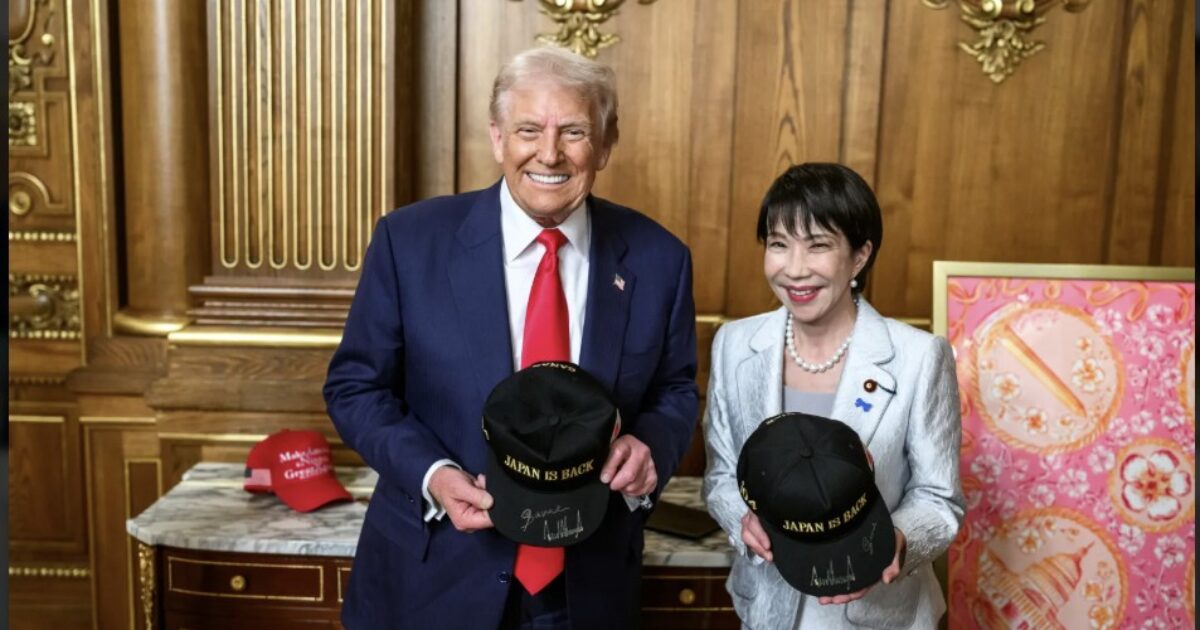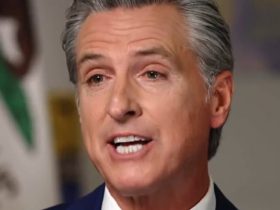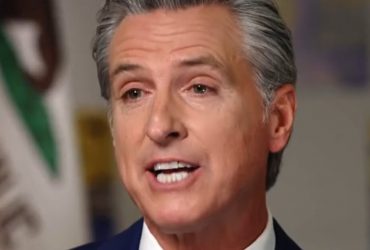President Trump and Japan’s first female Prime Minister, Sanae Takaichi, hold hats that say “Japan is Back.” Photo courtesy of the White House.
Japan’s first female Prime Minister, Sanae Takaichi, has built her leadership on a distinctly Trumpian platform that blends military expansion, strict immigration controls, economic independence, and an unflinching stance toward China. Her agenda emphasizes defense readiness, cultural preservation, and a renewed sense of national pride. These policies mirror the “America First” model in a Japanese context, marking a new era of assertive conservatism in Tokyo.
A close ally and protégé of the late Prime Minister Shinzo Abe, Takaichi has emerged as one of the most ideologically conservative leaders in Japan’s postwar history. Known for her strong nationalist views, commitment to military modernization, and hardline immigration stance, she describes her mission as protecting Japan’s sovereignty, identity, and strength in a rapidly changing world.
During her campaign for party leadership in September, Takaichi drew on both Abe’s legacy and Trump’s populist energy, promising to “make Japan strong again.” Reviving Abe’s slogan, she declared, “We must once again declare loudly, ‘Japan is back,’” and added, “I stand here with the lofty ambition and burning desire to bring Japan back to the top of the world.” Her slogans, “Make Japan Strong Again,” “Japan Is Back,” and “Bring Japan Back to the Top of the World,” capture the revivalist tone of her administration and the prideful optimism driving her movement.
Takaichi has made military readiness and national defense the centerpiece of her administration. She announced plans to accelerate defense spending to 2 percent of GDP by March 2026, one year ahead of schedule. Her defense agenda includes modernizing and upgrading the Japan Self-Defense Forces, expanding cybersecurity, and investing in nuclear fusion research to achieve long-term energy independence.
A strong advocate of revising Article 9 of Japan’s Constitution, which renounces the use of military force, Takaichi insists Japan must possess full defensive capabilities to counter growing threats from China, North Korea, and regional instability. She has called for deeper cooperation with the United States and allied democracies to maintain peace and balance in the Indo-Pacific.
Her foreign policy is defined by a decisive anti-China stance. During the 2021 Liberal Democratic Party leadership race, she was the most hawkish candidate on Beijing, criticizing Chinese economic practices such as intellectual property theft and urging Japan to reduce its dependence on Chinese supply chains.
Takaichi is widely regarded as an ultraconservative hardliner who sees China as Japan’s primary strategic threat. She aligns closely with President Trump’s approach to Beijing, especially on trade and security.
In April 2025, Takaichi visited Taiwan and met with President Lai Ching-te, reaffirming Abe’s statement that a “Taiwan emergency is a Japan emergency.” She called for “cooperation with Taiwan to jointly address defense challenges,” a move condemned by Beijing as a “dangerous provocation.” Takaichi described Taiwan as a “cherished friend,” sent a handwritten letter to President Lai, and expressed openness to forming a security partnership with Taipei.
Analysts expect her government to take a harder line on regional defense, reinforcing Japan’s role as a key counterbalance to Chinese power in East Asia.
Takaichi also supports passage of a Comprehensive Economic Security Act to block technology leaks to hostile nations. The law would restrict foreign students and engineers, particularly from China, from transferring sensitive Japanese technology for military purposes. She has urged Japan to diversify supply chains away from China and strengthen cooperation with the United States and European Union in semiconductors, rare earths, and advanced materials. Her economic plan reflects both nationalist self-sufficiency and global strategic alignment with Western democracies.
Her defense doctrine includes preparing for confrontation if necessary. She has called for the deployment of U.S. medium-range missiles in Japan and removal of Chinese marine buoys placed in disputed waters near the Senkaku Islands, underscoring her belief that Japan must be ready to act decisively to defend its sovereignty.
Domestically, Takaichi’s policies mirror the same hardline resolve. She has pledged a nationwide “crackdown on illegal migration,” declaring that “foreigners must strictly obey Japanese law.” She draws a clear distinction between genuine refugees and economic migrants, stating, “For those who come [to Japan] with financial motives and claim that they are refugees, I’ll have you go home.”
Her government allows foreign workers only in industries suffering acute labor shortages, under strict vetting and limited residency conditions. She opposes mass immigration and rejects granting political rights to non-citizens, arguing that uncontrolled migration threatens Japan’s social cohesion and national identity.
Ideologically, Takaichi is deeply rooted in Japan’s conservative establishment. A member of Nippon Kaigi, she supports traditional family values, constitutional revision, and a positive reinterpretation of Japan’s wartime history. She regularly visits the Yasukuni Shrine, which honors Japan’s war dead, including convicted war criminals, reflecting her belief in honoring Japan’s heritage regardless of international criticism.
Widely regarded as one of the most conservative figures in the Liberal Democratic Party, Takaichi sees herself as carrying forward Abe’s vision of a proud, self-reliant Japan. Her platform, expanding military power, confronting China, restoring traditional values, and restricting immigration, has drawn comparisons to Western populist movements.
Analysts note that President Donald Trump’s political model has become a reference point for leaders across Asia, Latin America, and Europe, inspiring a broader trend that some describe as “MAGA Makes Allies Great Again.”
The post Japan’s New Female-Trump Prime Minister – “Make Japan Japanese Again” appeared first on The Gateway Pundit.











